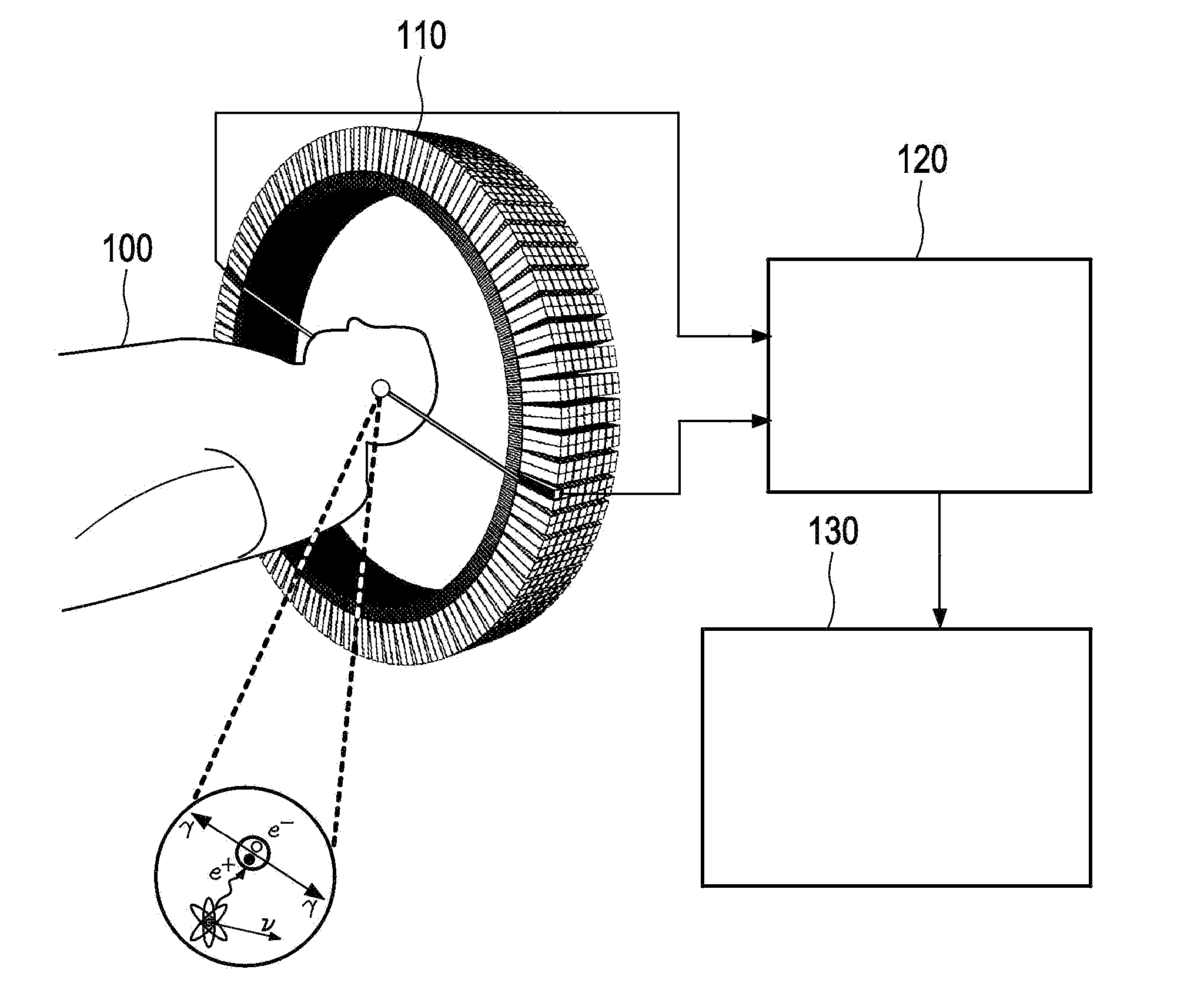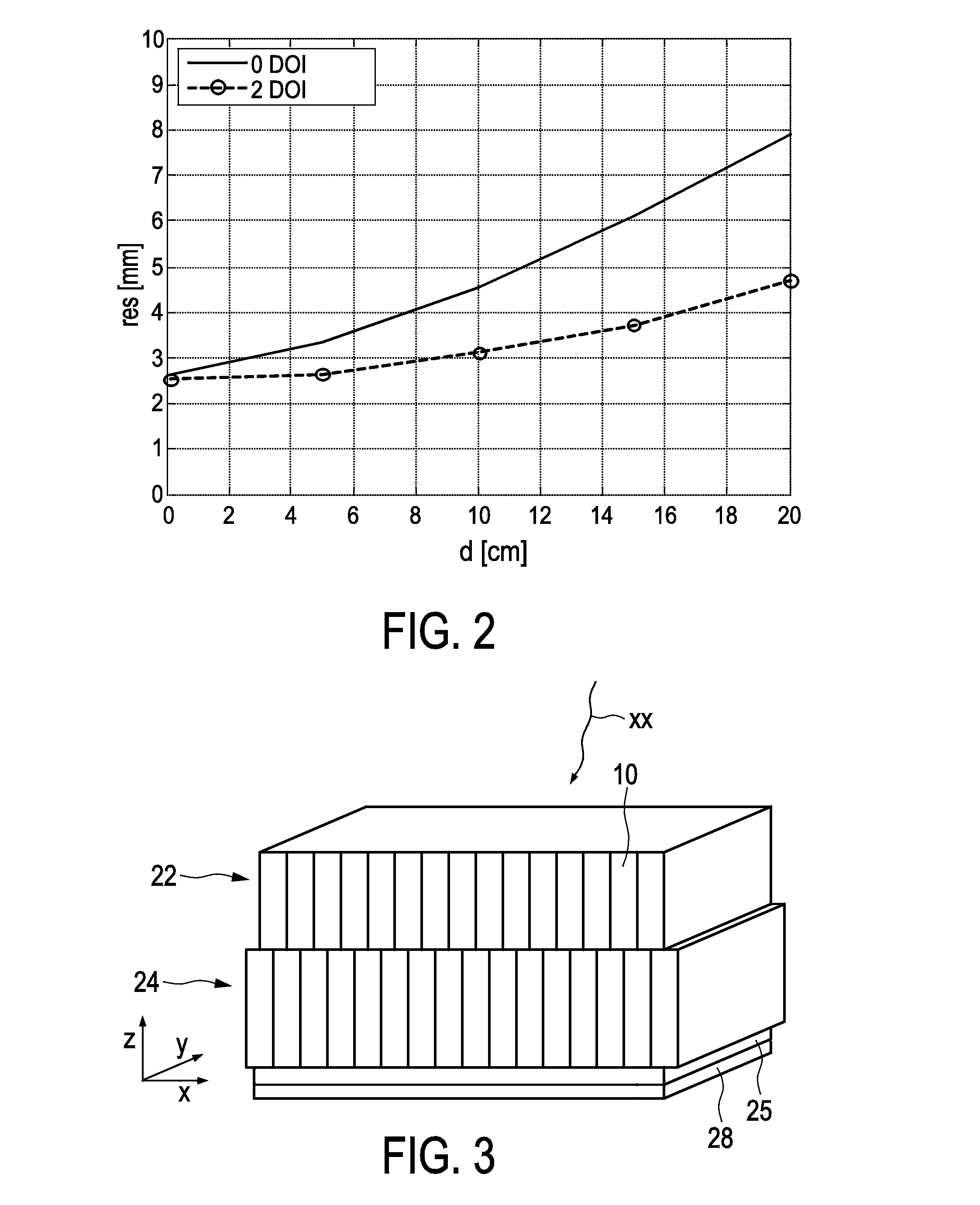MODELLING OF ToF-DOI DETECTOR ARRAYS
- Summary
- Abstract
- Description
- Claims
- Application Information
AI Technical Summary
Benefits of technology
Problems solved by technology
Method used
Image
Examples
first embodiment
[0053]FIG. 5 shows a flood map (lower portion of FIG. 5) and top (T) and side (S) views of a first setup (A) of a DOI detector device with DOI encoding. The measurement conditions included 2D encoding due to reflector foils in the outer layer, all crystals grinded on one outer side, inner layer (IL) with air gaps 21 without reflector, outer layer (OL) with reflectors 27 (in x and y direction), coupling by an optical coupling agent 26 (e.g. lightguide) of e.g. 25 μm thickness, and a single crystal of e.g. 10 mm as reference. Furthermore, a SiPM sensor 28 can be used as photo detector. As a result, a coincidence resolving time (CRT) of 325 ps+ / −20 ps, a light yield of approximately 1000 photons and an energy resolution of approximately 11% were obtained. Also several TDCs per sensor die reduce dark count triggers, as the light is shared only among two SiPMs (and not 4 SiPMs). This allows equal dark count triggers (or dead time) at higher effective operation temperature which is impor...
second embodiment
[0054]FIG. 6 shows a flood map and top (T) and side (S) views of a second setup (B) of a DOI detector device with DOI encoding. Here, the measurement conditions included 8 crystals of e.g. 3.8 mm*3.8 mm*10 mm per die, inner layer (IL) horizontal reflector, inner layer (IL) air gap 21, outer layer (OL) vertical reflector 27, optically coupled by a lightguide 26. Again, a SiPM sensor 28 can be used as photo detector.
[0055]As a result, a CRT of 340 ps+ / −20 ps, layer-independent light yield, and an energy resolution of approximately 11.5% was obtained.
[0056]The mounting complexity of the setup according to the second embodiment is comparable to the above first embodiment, but uses the asymmetry in vertical and horizontal spread to do the encoding. An extension to three-layer DOI is not possible here.
third embodiment
[0057]FIG. 7 shows a flood map and top (T) and side (S) views of a third setup (C) of a DOI detector device with DOI encoding. Here, the measurement conditions included 8 crystals of e.g. 3.8 mm*3.8 mm*10 mm per die, outer layer (OL) vertical reflectors 27, inner layer (IL) light guides 26, optically coupled by a horizontal lightguide 26. Again, a SiPM sensor 28 can be used as photo detector.
PUM
 Login to View More
Login to View More Abstract
Description
Claims
Application Information
 Login to View More
Login to View More - R&D
- Intellectual Property
- Life Sciences
- Materials
- Tech Scout
- Unparalleled Data Quality
- Higher Quality Content
- 60% Fewer Hallucinations
Browse by: Latest US Patents, China's latest patents, Technical Efficacy Thesaurus, Application Domain, Technology Topic, Popular Technical Reports.
© 2025 PatSnap. All rights reserved.Legal|Privacy policy|Modern Slavery Act Transparency Statement|Sitemap|About US| Contact US: help@patsnap.com



